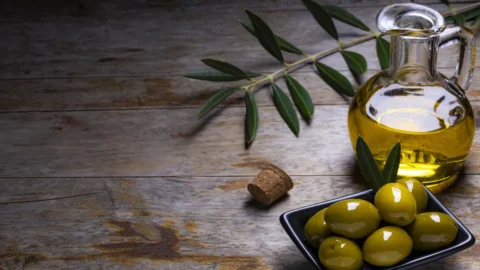Summer is the season of figs, so how not to celebrate royal dry fig of Atessa. In fact, if this delicious fruit originates from Asia Minor, the drying tradition is very Italian: from southern Italy - think of the white Cilento DOP fig - but also from central Italy (dried figs from Carmignano, among others ). And so too Abruzzo, and in particular the province of Chieti, has recently rediscovered the royal dried fig, grown in the hilly areas between Atessa, Torino di Sangro, Archi, Perano and Paglieta and which has become a Slow Food Presidium.
The Atessa fig is harvested at the end of the summer and is put on the market after October 4th. Until a few decades ago Atessa could boast a vast production of dried figs but in the 70s and 80s the industrial development of the Val di Sangro has put its cultivation in crisis: until, as increasingly often happens, a group of a few young people decided to recover this historic tradition, they gave themselves a disciplinary that regulates cultivation without chemical weeding and synthetic fertilizers, harvesting and drying, and the Slow Presidium Food supported them. At the moment, however, the only company that has carried out the production register, which produces and transforms the royal fig of Atessa, is the "La Ruelle" farm between the Trabocchi coast and the peaks of the Maiella which processes the Caracine fig, name derived from an ancient Samnite tribe who used it.
Moreover, a millenary tradition, that of the Atessa fig tree: the Abruzzo city has a history that has its roots in Roman times and archaeological excavations have highlighted the millenary link with the cultivation of this sweet, caloric fruit (it provides our body with 249 calories per 100 grams!), edible fresh in summer but also in winter thanks to drying. Over the centuries figs have played a central role in the local economy, used as food, as a bargaining chip, gift and medicine. The fig is the classic panacea for health: rich in fibre, mineral salts, vitamins, excellent for bones, skin and the immune system. This "Reale" variety is eaten in the winter months in the heat of a burning fire, stuffed with walnuts and accompanied by cooked must
And even that of Atessa, rigorously cultivated according to tradition, does not fail to preserve these precious qualities. Through a still manual procedure, a rediscovery of knowledge and flavors that has especially enthused the younger generations: "The figs are hand-picked between the second half of August and the end of September, taking care to keep the stem – explains Vincenzo Menna – Then they are spread whole or cut in half on the cannizzi raised and left to dry in the sun during the day and stored in the dark at night; the operation is repeated until the fig is dry but still soft to the touch. At this point the figs are stuffed with a walnut kernel and after having closed them, they are placed in the oven at a temperature of about 80/90° and finally stored with bay leaves in a dark and dry place until winter”.
Its history proves that the royal fig of Atessa, which can also be cultivated thanks to the microclimate of these hills, has been a particularly successful variety for centuries. Some historians of the past recount, for example, that Roberto d'Angiò, in the Chieti area, had even imposed, in 1320, taxes on dried figs produced in Atessa and marketed by sea. In the "Description of the Kingdom of the Two Sicilies" by G. Del Re (1835), it is reiterated that the trees produce copious fruits that "…besides internal consumption, they sell a part to mountain people, they embark another for Dalmatia, Fiume, Trieste, Venice, and they draw about 15000 ducats a year".
Even today, thanks to its rediscovery, the Atessa fig is also known abroad and sometimes, at international fairs, demand ends up exceeding supply. And it is the basis of many typical recipes of the local pastry shop, such as the Atessa dried fig nougat, an ancient and precious dessert composed of honey, dried figs and walnuts, the Sliced figs, and dried figs in chocolate, of which we propose the recipe below.
La Ruelle farm
Contrada Piana Matteo 55
660 41 Atessa (CH) Italy
telephone 39 333 34 35274
RECIPE: DRIED FIGS IN CHOCOLATE
Ingredients
– Dried figs from Atessa
- Almonds
– Dark chocolate melted in a bain-marie
– Crushed cloves
– Candied citron cut into strips
Preparation
In each dried fig, place an oven-roasted almond, the clove pesto and candied citron strips. Close the figs and dip them in the melted dark chocolate in a bain-marie. Remove them and let them drain from the excess chocolate. Place them on some greaseproof paper and let them dry.





To date, the royal fig of Atessa is grown and produced only in Atessa.